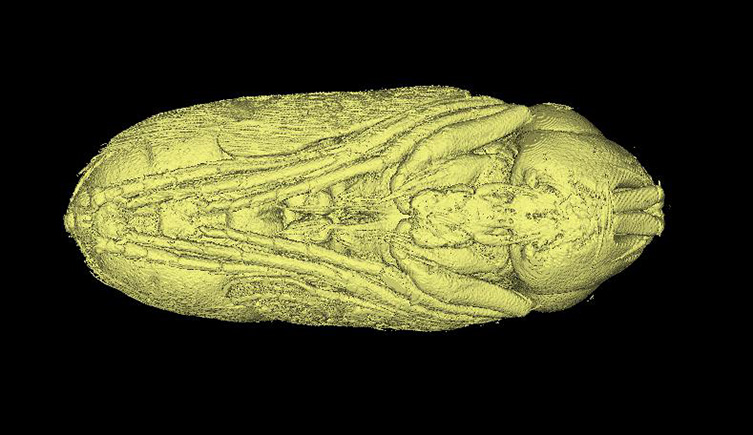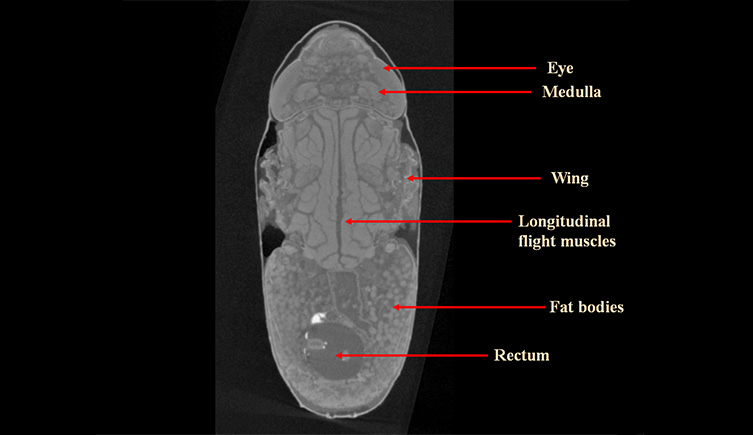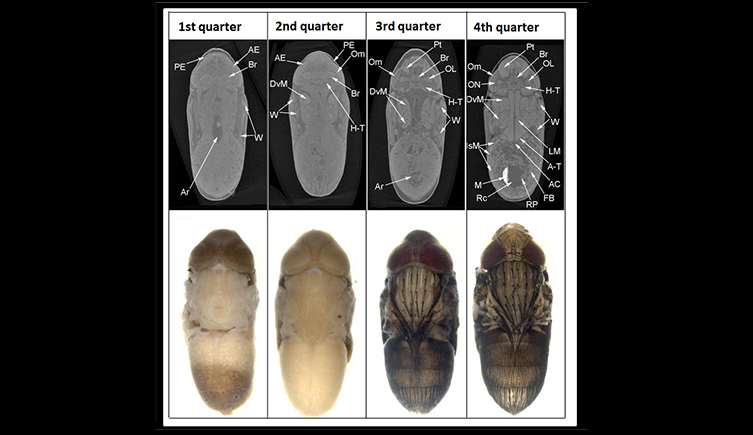CT scanning of blowfly pupae

3D virtual reconstruction of a CT-scanned blowfly pupa
Project summary
- Focus: detailing the features of blowfly pupae at different stages of development to provide a reliable tool for forensic entomology
We use micro-CT scanning to image in detail the features of blowfly pupae at different stages of development.
Correctly ageing insect specimens from a crime scene is an essential part of forensic entomology because it can help estimate minimum period since death, or post-mortem interval(PMImin) in cases of suspicious death (such as homicide or suicide).
Blowflies are the first and most common insects to appear on the scene in such cases, so are most commonly used to estimate PMImin. Knowing which developmental stage the insects are in is essential for calculating how long it is since they arrived.

Micro-CT image of a blowfly pupa nearing the end of its development with some key characters highlighted
Focus on the pupae
Blowflies spend approximately 50 per cent of their lifecycle as pupae, so ageing the various stages of pupal development can be important in estimating a PMImin.
Most techniques rely on killing the pupa for observation, by peeling away the hardened and darkened pupal case. However, we are using micro-CT scanning to see inside the opaque puparial case (puparium) and reveal the details of the pupa.
Initial studies have shown that a temporal resolution to 25 per cent of the pupal period is possible, and we are working to extend the resolution to 10 per cent.

Micro-CT images (above) and light microscopy images (below) of a blowfly pupa at four stages in its development, showing changes in the internal and external morphology